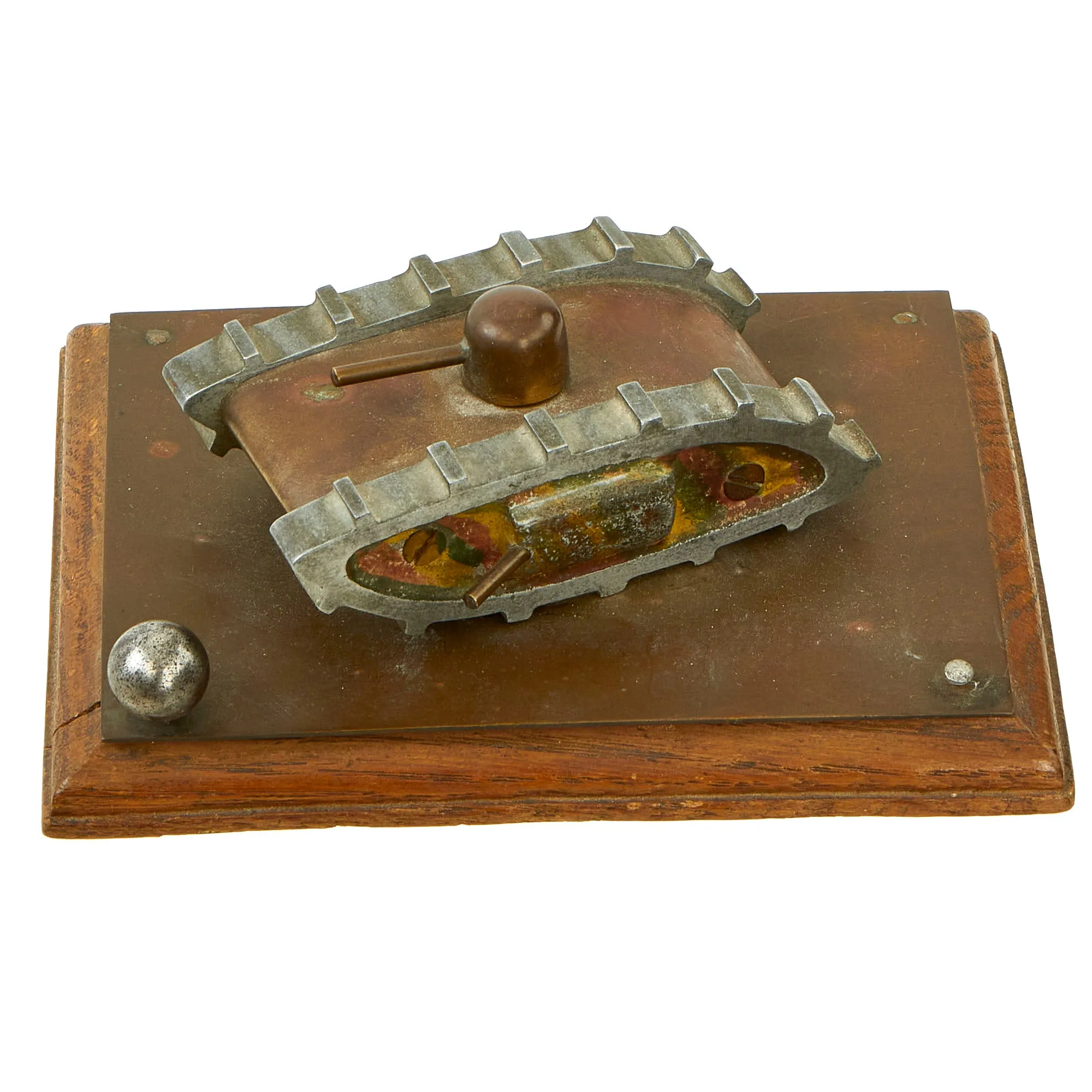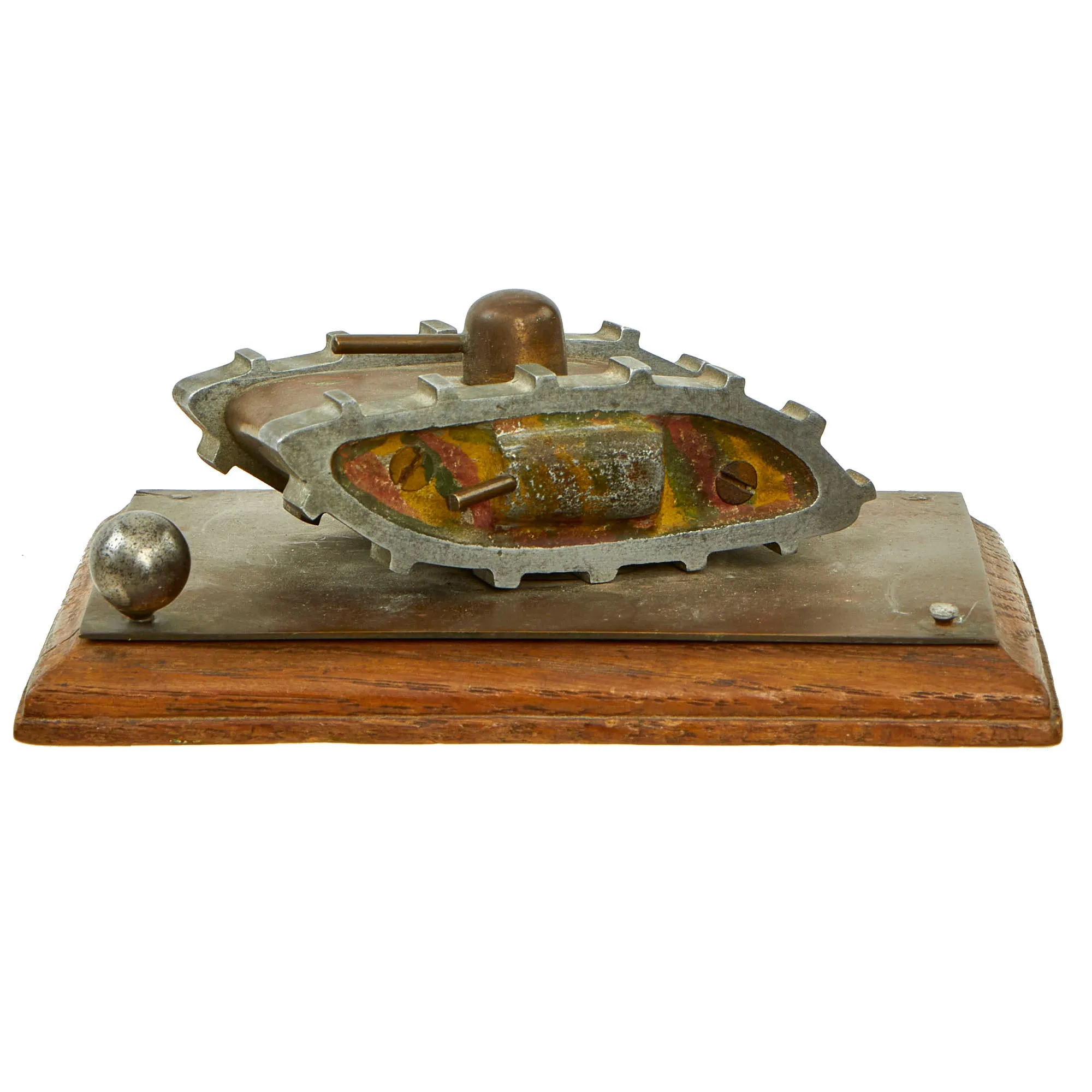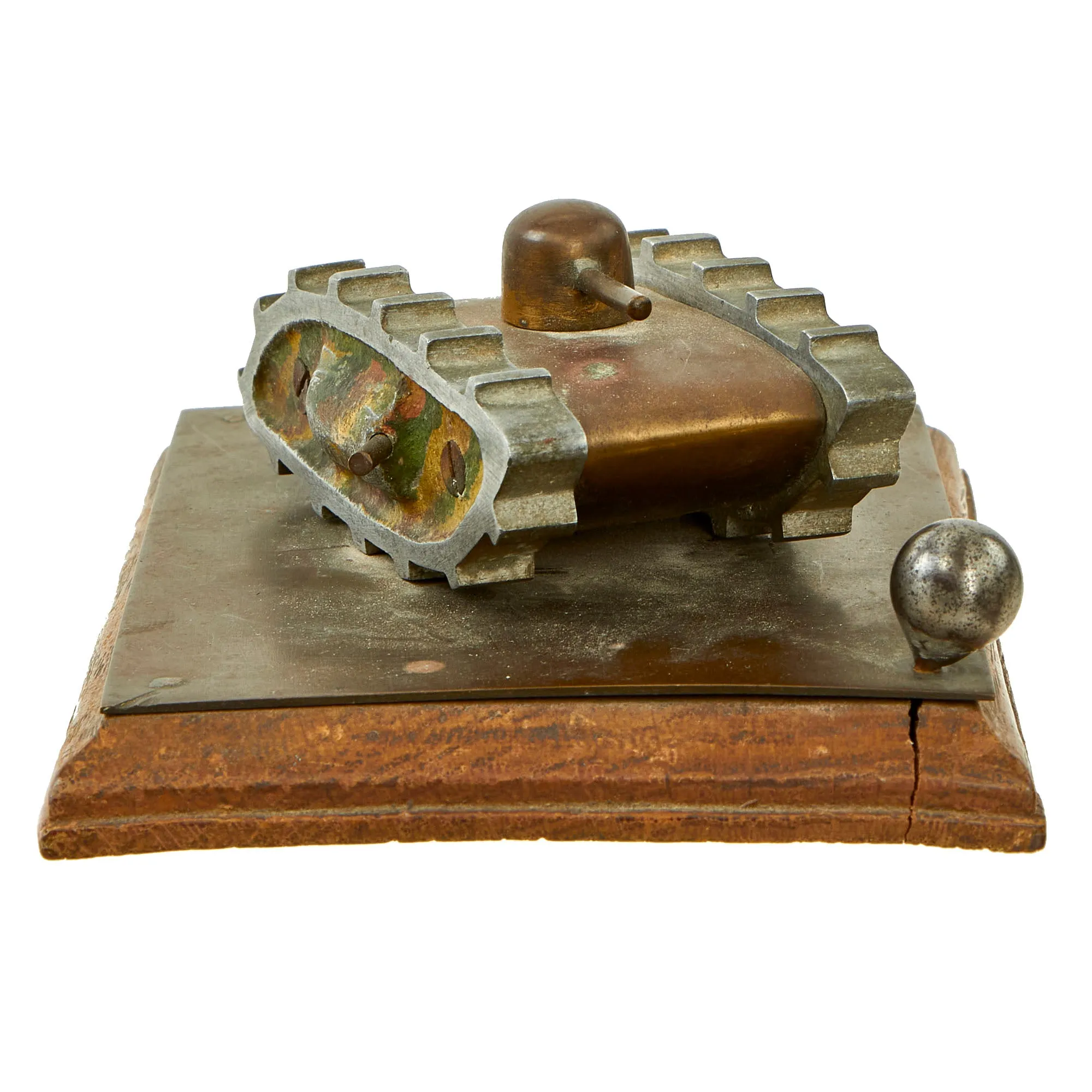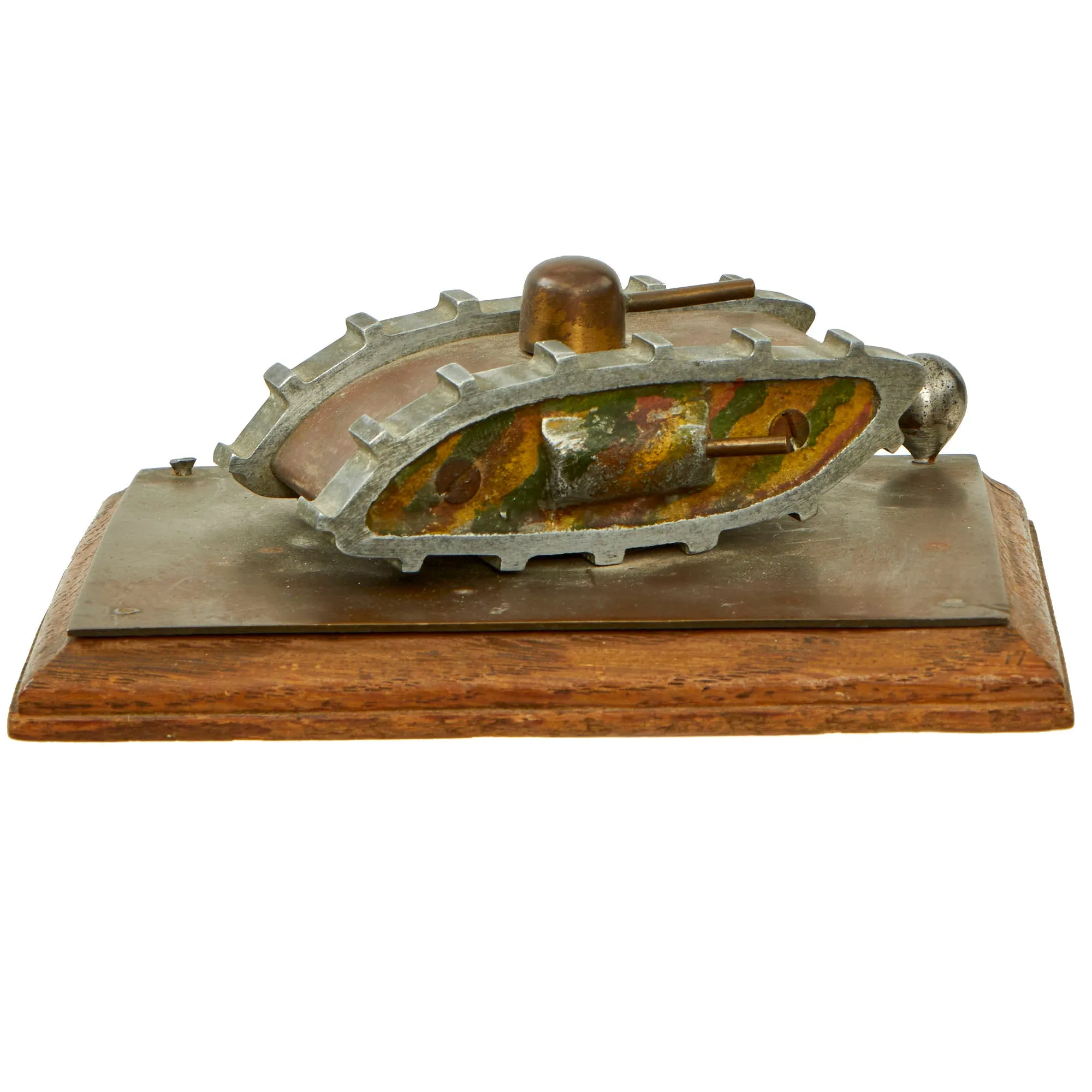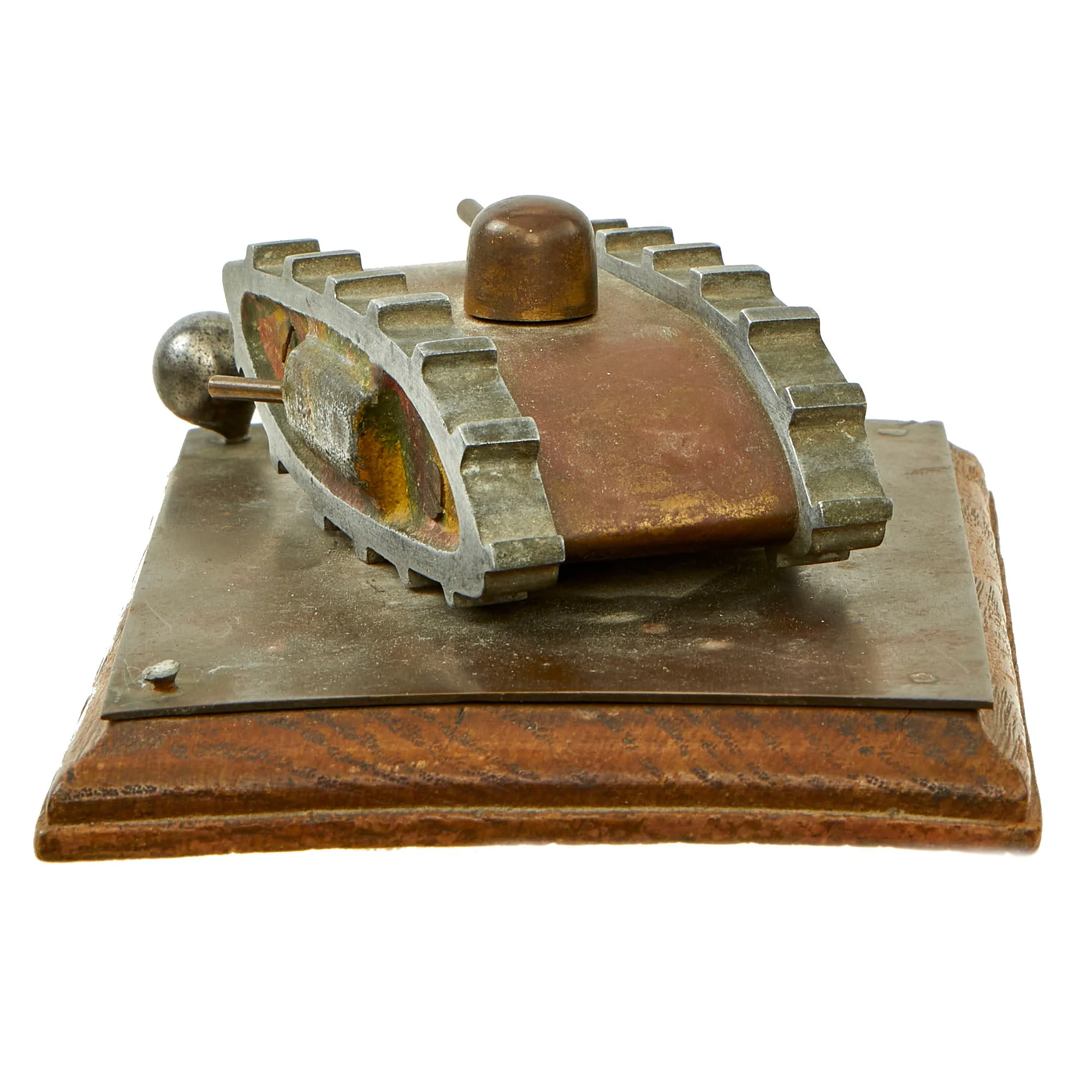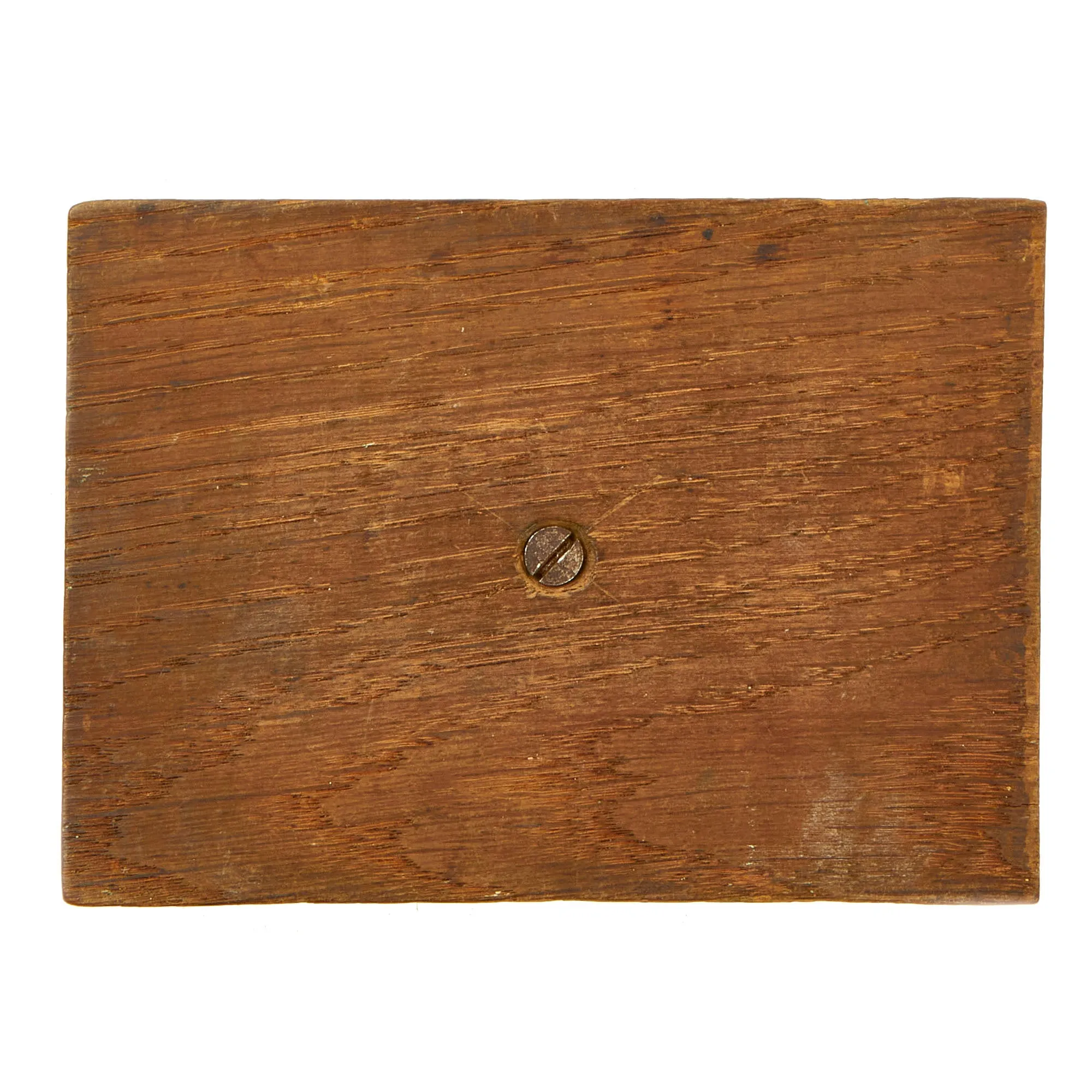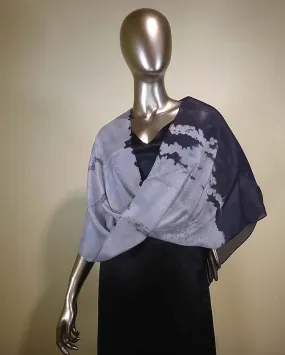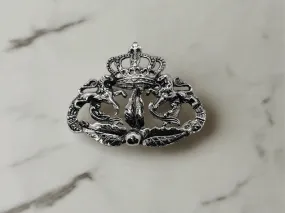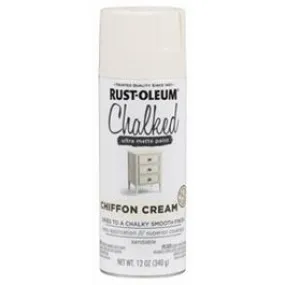Original Item: Only One Available. Trench art is any decorative item made by soldiers, prisoners of war, or civilians where the manufacture is directly linked to armed conflict or its consequences. It offers an insight not only to their feelings and emotions about the war, but also their surroundings and the materials they had available to them.
Not limited to the World Wars, the history of trench art spans conflicts from the Napoleonic Wars to the present day. Although the practice flourished during World War I, the term 'trench art' is also used to describe souvenirs manufactured by service personnel during World War II. Some items manufactured by soldiers, prisoners of war or civilians during earlier conflicts have been retrospectively described as trench art.
This miniature trench art tank is what we believe to be a Mark V. The Mark V tank was not exclusively used by the British, they were also used by the United States and other allied nations during the war, this tank model could have been made by any one of them. The base in which the tank is secured via brass flathead bolt measures approximately 5” x 3 ½”. The tank itself does measure 3 ¼” x 1 ¾”. THe paint on the sides is the ever so popular striped camo and retained very well with details still present.
A lovely example ready for further research and display.
The British Mark V tank was an upgraded version of the Mark IV tank.
The tank was improved in several aspects over the Mark IV, chiefly the new steering system, transmission and 150 bhp engine, but it fell short in other areas, particularly its insufficient ventilation leading to carbon monoxide poisoning for the crew. Various versions were fitted with a variety of armament including 6-pounder guns and machine guns.
It was first deployed in July 1918 on the Western Front at the Battle of Hamel; then at the Battle of Amiens, and on the Hindenburg Line during the closing months of World War I.
During the Allied intervention in the Russian Civil War on the White Russian side, four Mark Vs were delivered to Archangelsk, four to Tallinn, Estonia,[6] and around 70 were delivered to Novorossiysk in southern Russia. The survivors were captured and used by the Red Army.
There were two main further variants, the lengthened Mark V* and a few Mark V**s with a more powerful engine and wider tracks. A planned Mark V*** was never built. There are eleven surviving Mark V tanks. The Mark VIII tank was an enlarged Mark V with greater power: only those with the Liberty engine saw post-war service in the US. A further unarmed development was the Mark IX tank, one of the first armoured personnel carriers, which saw limited use in Britain after the war.
In general the Mark V was successful, especially given its limited service history, and somewhat primitive design dating back to 1915.




